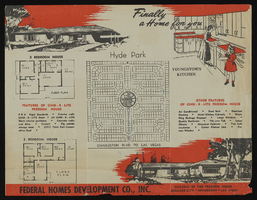Search the Special Collections and Archives Portal
Search Results

Postcard of a barge, Lake Mead, circa 1935-1950
Date
1935 to 1950
Archival Collection
Description
Picture of the first load of gold ore to be transported on Boulder Lake by barge.
Image
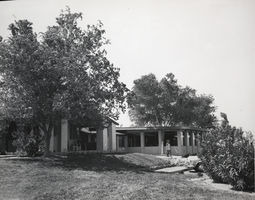
Photograph of the exterior of the Lake Mead Lodge, Nevada, circa 1940s to 1950s
Date
1940 to 1959
Archival Collection
Description
A black and white side view of the front exterior of the Lake Mead Lodge.
Image
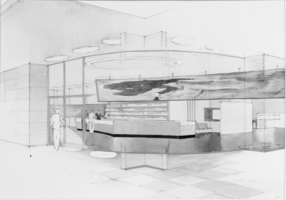
Film transparency of an architectural drawing, Nevada, circa 1930s-1940s
Date
1930 to 1949
Archival Collection
Description
A close up architectural sketch of the Boulder Dam Visitors Bureau.
Image

Film transparency of Lake Mead National Recreation Area administrative building, circa 1940s-1950s
Date
1940 to 1959
Archival Collection
Description
An image of the Lake Mead National Recreation Area administrative building.
Image
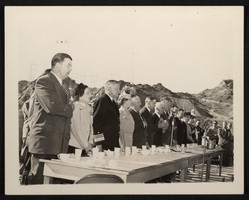
Photograph of the Rotary Club, Hoover Dam, circa October 1946
Date
1946
Archival Collection
Description
An image of Rotary Club members standing to sing the national anthem.
Image

Photograph of the Rotary Club, Hoover Dam, circa October 1946
Date
1946
Archival Collection
Description
An image of Rotary Club members standing to sing the national anthem.
Image

Photograph of the Rotary Club, Hoover Dam, circa October 1946
Date
1946
Archival Collection
Description
An image of Rotary Club members gathering for lunch.
Image
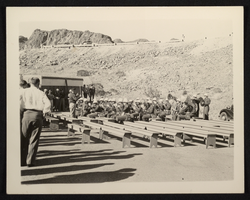
Photograph of the Army band, Hoover Dam, October 1946
Date
1946
Archival Collection
Description
An image of an Army band performing for members of the Rotary Club.
Image
Pagination
Refine my results
Content Type
Creator or Contributor
Subject
Archival Collection
Digital Project
Resource Type
Year
Material Type
Place
Language
Records Classification

